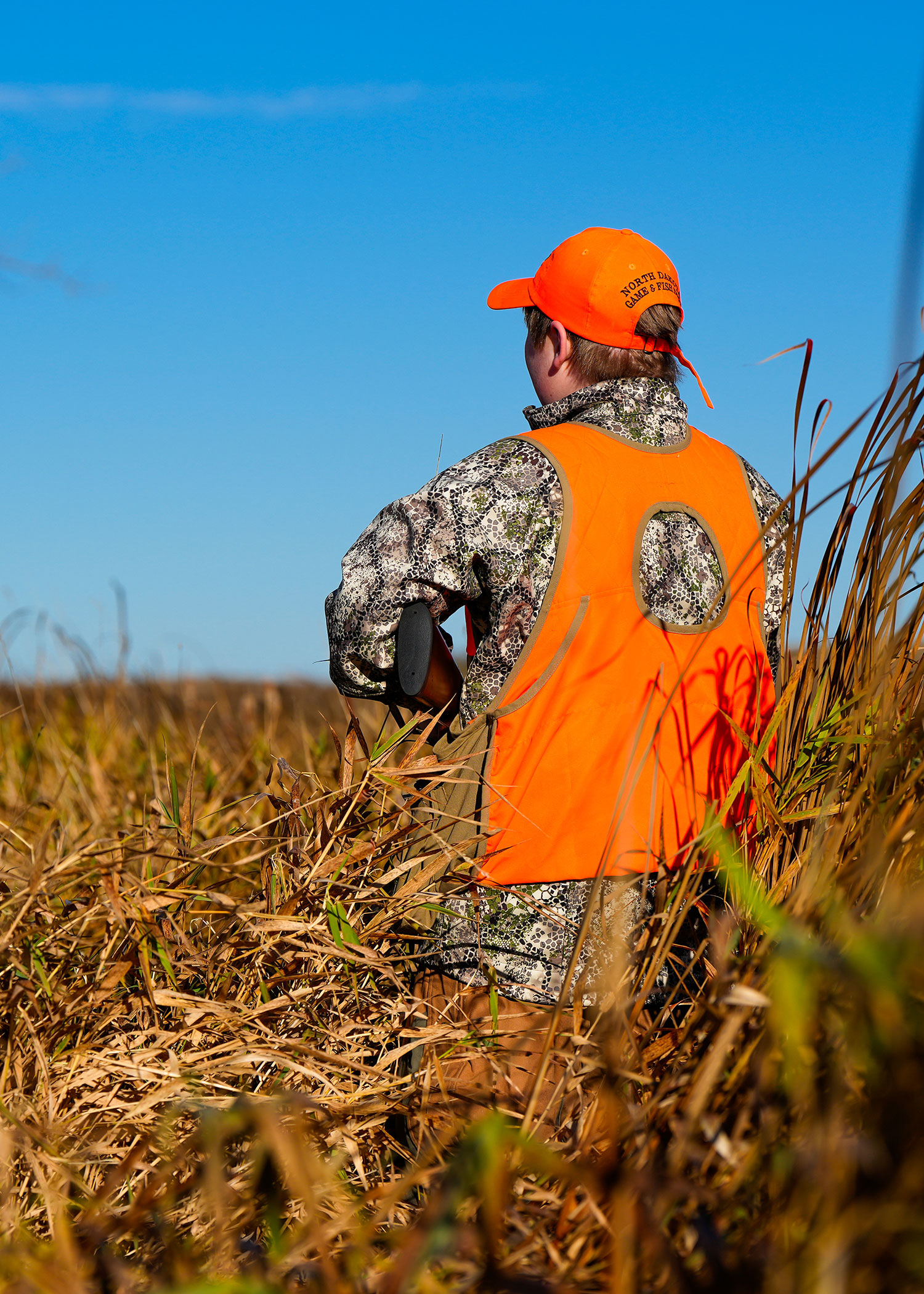Improved Crowing Count, a Good Sign
Ron Wilson

In mid-June, at about the peak of the pheasant hatch in North Dakota, upland game bird biologists were all smiles about the possibilities of the coming fall hunting season.
They had good reason to be optimistic, considering hen pheasants were in terrific shape heading into nesting season following a mild winter; timely rains bolstered what remains of the state’s grassland nesting habitat while also jumpstarting an important crop of insects vital to chicks after hatching; and the number of roosters heard crowing in the Game and Fish Department’s spring pheasant crowing count was up 37% from 2023 when nearly 54,000 hunters shot an estimated 320,000 birds.
Barring a gully washer, hailstorm or some other unforeseen buzzkill event that can wipe out nests or kill vulnerable chicks, things are looking up, said RJ Gross, Department upland game management biologist.
The first good indicator, but not the tell-all for the upcoming season, are the positive results from the crowing count.
“Last year 14 crows per stop was the average and this year it was right at 20, which is one of the better ones we’ve ever had,” Gross said. “It’s not surprising considering last year we had such great production. We saw about a 70% increase in the number of pheasants counted during our July and August brood surveys.”
Game and Fish Department personnel have been conducting crowing counts, getting a sampled look at the number of roosters in the breeding population, since the 1980s. They run about 100 routes in four management districts across the state from May 1 through June 10.
“They are 20-mile routes, usually through the best habitat. There are 10 stops on each route, so every 2 miles you stop, get out, walk away from your vehicle and count the number of crows you hear in 2 minutes,” Gross said. “We repeat that 10 times, and we try to do them three times throughout the survey period.
“The areas that have pheasants and have grass, the pheasant densities are very high,” he added. “The northwestern and southwestern parts of the state were the key areas where the densities had the biggest increase. We had some routes where the crows doubled from the year before.”
Again, the Department’s crowing count survey is just one of the tools to get an inside look at the state’s pheasant population to help predict the coming hunting season.
“With the crowing counts we’re looking at the number of roosters that are coming into the breeding population. We’re not looking at hens, things like that,” he said. “So, as long as we can see that we have a surplus of roosters, the high density of pheasants, you can guess based on looking at habitat and weather that we should have good production.”
A better indicator as the season nears is the Department’s late summer roadside brood counts conducted July 20 through August when biologists are counting all upland birds, no matter the species or gender.
“That’s what everyone’s looking at when they’re trying to plan their bird hunting trip to North Dakota,” Gross said.
While crowing counts were up by nearly 40% statewide, not all of the management districts are created equal. For example:
“Pheasants aren’t doing well in the counties in southeastern North Dakota. All upland birds are not doing well because they’ve lost the most CRP down in that area and a lot of crop conversions,” Gross said. “Pheasants really key on agriculture, especially those small grains, wheat, barley, oats, things like that. Down in that area it’s a lot of corn and soybeans. Mix that with the loss of a lot of grass, pheasants just aren’t responding.
“A lot of hunters will remember our heydays of 2008, where we harvested almost a million birds and we had the most crowing counts on record,” he added. “This year it’s very different. Back in 2008, the northwest, the southwest and the southeast all were similar, about 30 crows per stop type of thing. Now, when you’re looking at that, the southeast is right around 10, sometimes below 10. The southwest and northwest are the ones that are carrying the statewide average.”
